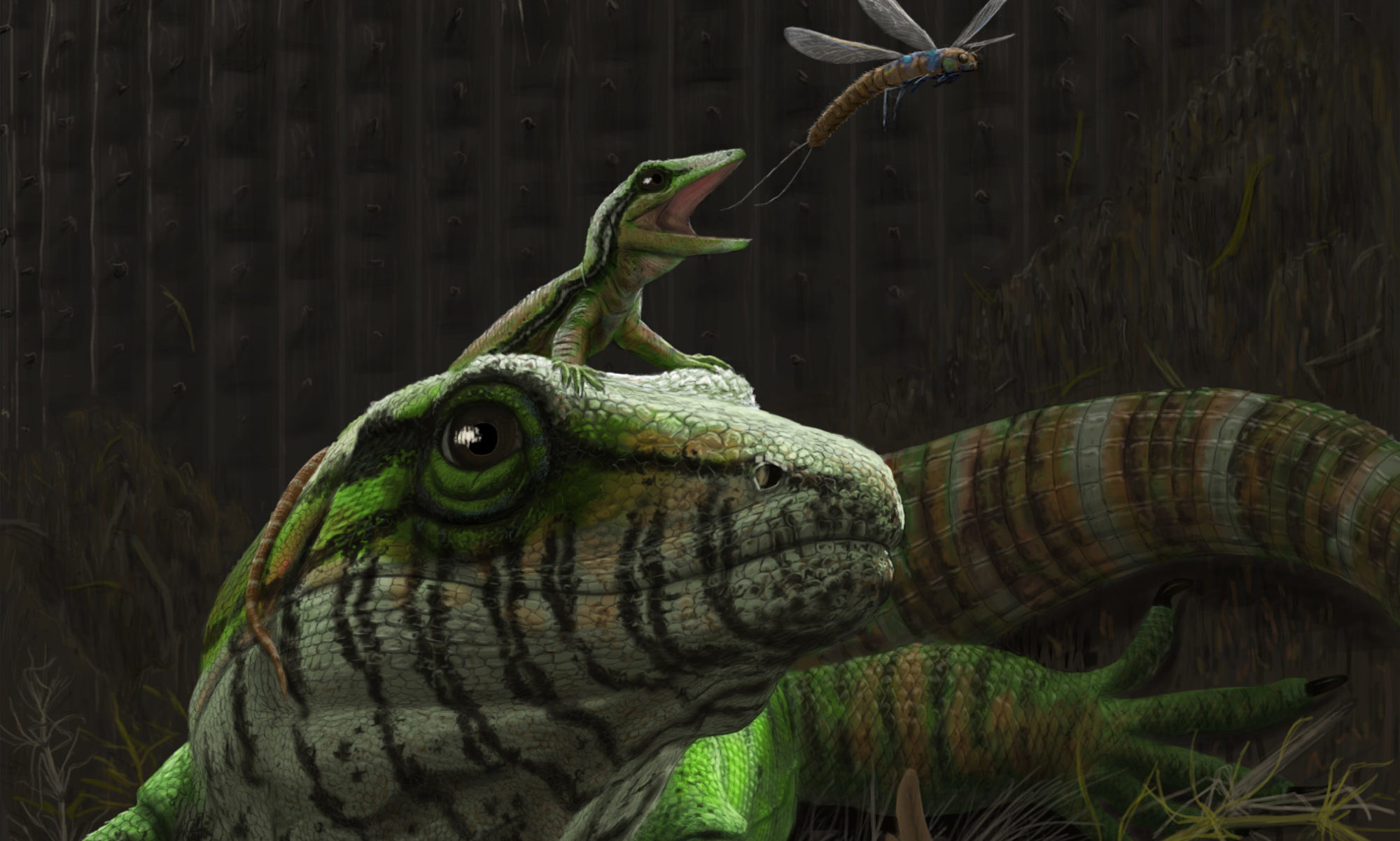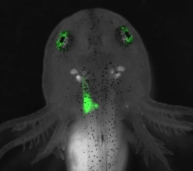
We are interested in how phylogeny, development and function underlie the origin of morphological diversity. We take a broadly comparative approach, applying integrative techniques by combining the fields of paleontology, developmental biology, experimental genetics, and functional morphology to characterize instances of morphological diversification in major lineages of tetrapods. Currently we employ extinct and extant amphibians to work towards these goals.
Experimental evolutionary developmental biology
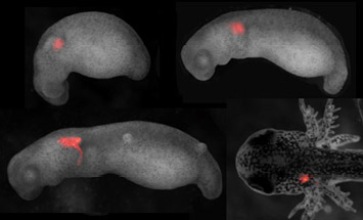
We are interested in the role of developmental evolution as a source of morphological diversity. Our goals in this area involve characterizing skull morphogenesis, and to use a phylogenetic context to understand how changes produce variation in adult morphology. We are currently investigating the evolutionary development of the skull in amphibians. We utilize GFP-mutant strains and injection methods to trace developing cell lineages and observe structural morphogenesis. This is followed by examining the expression of patterning genes (e.g., Hox, Pax) and by, finally, taking an experimental approach to determining the function of genes, through controlled perturbation. This work identifies pathways that may be more or less labile/plastic, as well as instances of the evolution of novel morphogenetic pathways.
Morphological evolution in deep time
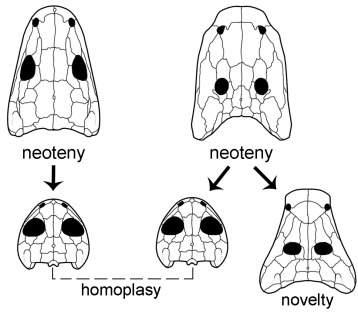
We utilize the fossil record to document the consequences of large-scale morphological evolutionary events, such as those produced by heterochrony/heterotopy and certain types of developmental interactions (e.g., brain-skull). Our goal in this area of research is to document (qualitatively and quantitatively) the patterns of morphological change that characterize transitions in the lineage leading to modern amphibians. Our research works towards synthesizing new data derived from under-utilized aspects of organisms, specifically the brain and braincase, in a developmental context. These data can be used to generate hypotheses of developmental drivers of morphological change, thereby refining models associated with specific types of developmental perturbations. The patterns obtained provide a means for making comparisons with transitions in other lineages to test competing hypotheses that certain processes are expressed as universal patterns in the evolution of morphological diversity (homoplasy), or not (novelty).
Environmental and functional influences on morphology
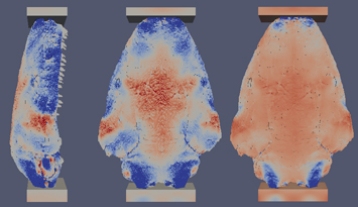
In addition to molecular and development constraints, functional factors have a strong influence on morphology, and can be powerful sources of morphological diversity. Fossoriality (burrow excavation) is an example of a behaviour that has strongly influenced morphology in vertebrates. In fact, it is a rare example of a behaviour that has evolved convergently in every major tetrapod lineage, making it a unique system for exploring functional influence on morphological evolution in a broad phylogenetic context. Our goals in this area include documenting instances of convergent as well as novel strategies for coping with functional constraints. Employing Finite Element Analysis (FEA) has revealed how stress and strain are distributed throughout the skull in caecilians, which will be used as a point of comparison to test whether tetrapod skulls respond in morphologically similar ways to similar functional pressures. This research is being conducted in collaboration with Jen Olori (SUNY Oswego) and Michelle Stocker (Virginia Tech).
Improving the phylogenetic framework of amphibians
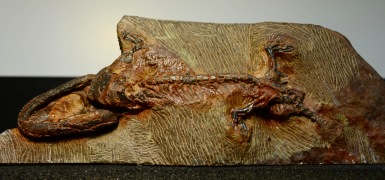
The origin and pattern of relationships among the living amphibians (frogs, salamanders, and caecilians) and between the living amphibians and their fossil counterparts remains unresolved. The goals of our research in this area include contributing new data to improve our understanding of these patterns of relationship. We are working towards this goal by reanalyzing material already in collections, as well as growing new collections through an active field program targeting the Carboniferous of Nova Scotia. Annual fieldwork at world famous localities such as the UNESCO World Heritage Site of Joggins is providing new material pertaining to a time period when the oldest members of the living amphibians were diverging from one another. It is our hope that new insights will be gained through the discovery of new specimens from this critical time period in tetrapod evolution.
Click the Edit link to make changes to this page or add another page.
